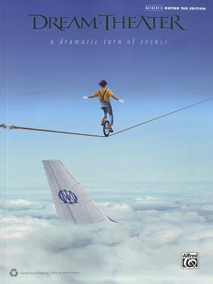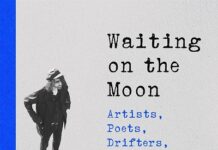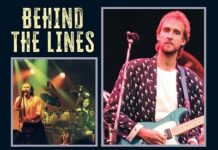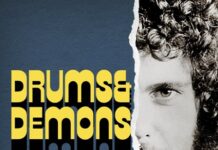Alfred Music Publishing has released a music book of Dream Theater’s A Dramatic Turn Of Events for piano and keyboards. Not for the faint of heart, this book represents the virtuosity of Dream Theater keyboardist Jordan Rudess. The musician worked closely with master transcriber Chris Romero to achieve this monumental task. Romero captured the correct feel of all the musical selections and even included Rudess’ fingering.
A personal forward by Rudess starts the journey as he explains the state of the band and how he wrote his keyboard parts. The nine tracks that follow are in the same order as the recording.
The first song, “On the Back of Angels”, should be listened to over and over along with the printed music to get a feel of the many time changes that take place throughout the piece. For many, the idea of trying to figure out this song by ear would be, to say the least, frustrating, if not impossible. However, the song, for the most part, is written in the “friendly” key of G. One will also find Rudess’ fingering very helpful with some of the more complex runs both up and down the keyboard. This piece is extremely challenging and beautifully showcases the genius of Rudess.
“Build Me Up, Break Me Down” follows in the key of A. This guitar-driven piece has nice synthesizer pad accompaniments. This song also changes from 4/4 time to ¾ time, which is clearly noted. It’s a rockin’ good time, for sure!
“Lost Not Forgotten” shows off Rudess’ piano playing prowess with the simplicity of the first sixteen bars followed by raging arpeggios through familiar chords up until measure 33. At measure 33, your hands will land on familiar chords again. After a brief touchdown you will find yourself soaring again through sixteenth note madness. Multiple time changes will follow throughout — 3/4 to 4/4 to 5/4 to 6/4 and back to 5/4. The player will definitely need to douse his/her fingers after playing this one, because if done correctly, they will be on fire. The visual artistry of the notes written out on the page, which appear as printed pyramids, is impressive.
“This Is The Life” follows and is written in G but switches to C at measure 101, then back to G at measure 119. The numbered measures are an added bonus. They really help when rehearsing with a band. There are no sixteenth notes to deal with in this piece. Some players (myself included) will find this to be a big relief!
The recording of “Bridges In The Sky” begins with a Gregorian-like chant and synthesizer pads that were left out of the transcription. The guitar starts off this tune with the written organ part starting at measure 18. From there, grab the horse by the reins and hang on dearly as the eighth notes through the 6/8 and 12/8 time signatures will go flying by. From the organ start to the end of the song, the transcription follows perfectly, including the guitar and keyboard solos. I was particularly impressed with the transcription on this song.
“Outcry” is 14 pages of pure bliss starting off in familiar time signatures and then proceeding into rougher waters through multiple meter changes. Although an intimidating piece, the advanced musician should enjoy playing along or just simply reading through the notation while listening.
“Far Cry From Heaven,” beautifully transcribed from start to finish, allowed me to redeem myself as a piano player. This is a straight-forward ballad written in the key of C. No sixteenth note patterns through many time signatures that will knock you off your piano bench on this one. If you are new to Dream Theater, this may be the song you want to tackle first.
“Breaking All Illusions” is another shining example of all that is great about Dream Theater. This song is 14 pages of blazing melodic lead lines through many time signatures. The piano, pad, choir, pad/organ, Minimoog/strings, and choir voicings Rudess uses on his synthesizer are included and are key to dialing in the correct sounds.
The last song included is “Beneath The Surface.” This piece appears to lack the complete keyboard transcription. From the beginning, piano is indicated, although on the recording it sounds more like the guitar part is what is actually written out. Strings flow through this entire piece. However, the Emerson-esque “Lucky Man” synthesizer solo has been included note for note. All hail the mighty Moog!
Once again, Alfred Music has hit the mark. Their commitment to getting it right is evident here. That is why professional musicians trust Alfred. The fact that Ruddess worked so closely with the transcriber shows how much time and effort was invested to ensure a quality product — which is exactly what I think you have here.
At first look, this book presents many difficult challenges and may be intimidating. I have always been intrigued by Dream Theater and frankly, in awe of Ruddess. What a treat to be educated as well as get a peek into the mind of one of today’s most gifted keyboardists.
Music is about pushing yourself creatively and it’s hard not to be a fan of Dream Theater after seeing their music in print. A Dramatic Turn Of Events for piano and keyboards confirms that progressive rock and its younger cousin “progressive metal” are alive and popular with musicians at all levels.
~ David R. Pighin




















